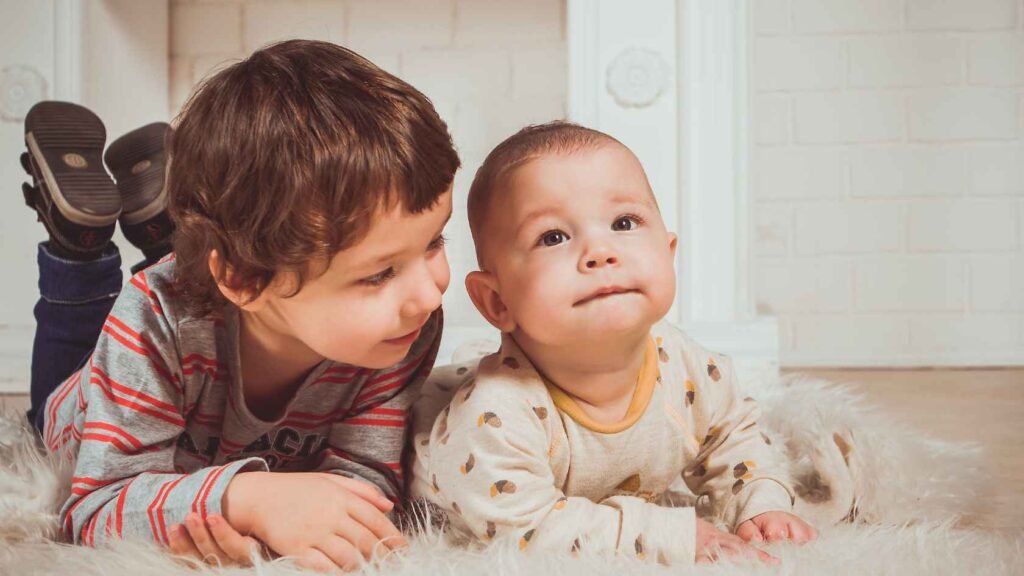Empathy is one of the most important skills a child can learn.
It helps toddlers understand others’ feelings and build relationships. It also develops their emotional intelligence.
As a working parent, you may wonder, how can I teach empathy to my toddler with limited time?
The good news is that we can nurture through everyday moments and simple activities.
In this article, we’ll explore how to teach empathy to toddlers and when they begin to show signs of empathy.
So, let’s dive deeper!
Is Empathy Taught or Natural?
Empathy is a skill that can be both natural and learned.
Some children show early signs of empathy. But, it develops with time, practice, and good examples from parents and caregivers.
Natural Instinct
Toddlers naturally begin to recognize emotions in others. Around the age of 2, many children start to understand when someone is sad or upset and may try to comfort them.
Learned Through Example
Parents play a key role in helping toddlers understand how to respond with kindness and care.
Toddlers learn to show kindness by seeing empathy in daily interactions.
When Do Toddlers Begin to Show Empathy?

Toddlers usually begin to show early signs of empathy between the ages of 18 months and 2 years.
This is when they start recognizing emotions in others and may try to comfort someone who is sad or upset.
However, empathy continues to develop well into childhood. So your role in nurturing it is crucial during these formative years.
Simple Ways to Teach Empathy to Toddlers
Teaching empathy doesn’t have to be time-consuming.
Here are some easy ways you can help your toddler develop empathy, even if you have a busy schedule.
1. Talk About Emotions
One of the simplest ways to teach empathy is by talking about emotions.
When your toddler sees someone who is happy, sad, or angry, explain what that person might be feeling and why.
How to Do It
When your toddler sees another child upset, say something like, “She’s crying because she’s sad. How do you think we can help her feel better?”
This helps your child understand others’ feelings and consider how to respond.
2. Be The Role Model of Empathy in Your Daily Life

Toddlers learn by watching you. If they see your kindness in responding to others, they’ll mirror it.
How to Do It
Show empathy in your daily interactions. For example, if your toddler is frustrated, say, “I see you’re feeling upset. Let’s take a break and figure this out together.”
Modeling this behavior teaches your child how to respond with care when others are upset.
Related Reading: Raising Emotionally Strong Kids—Tips for Working Parents
3. Encourage Sharing and Helping
Encourage your toddler to share toys or help others build social skills and teach them the joy of giving.
These small acts help toddlers learn to care about others’ needs.
How to Do It
During playtime, encourage your toddler to share toys with a sibling or friend.
You can also ask for their help with simple tasks, such as putting away toys or helping set the table.
Praise their effort when they show kindness. You can say things like, “It was kind of you to share that.”
4. Use Books and Stories to Teach Empathy
Reading books that feature characters experiencing different emotions is a great way to teach empathy.
Stories allow toddlers to see the world from someone else’s perspective.
How to Do It
Choose books that highlight feelings or friendships. Then ask your toddler how they think the characters feel.
You can ask questions like, “Why do you think he’s sad?” or “How can we help her feel better?”
5. Role-Play Emotions
Role-playing is a fun and interactive way to teach empathy. By pretending to be different characters or acting out emotions, toddlers can learn how to respond to others’ feelings.
How to Do It
Use stuffed animals or dolls to role-play different scenarios.
For example, pretend one of the toys is sad and ask your toddler how they would comfort it. This helps them practice showing empathy in a playful way.
Related Reading: Educational Activities for Toddlers at Home—6 Fun Ideas to Try
What Activities Teach Empathy to Toddlers?
There are several fun and simple activities you can do with your toddler to help them understand empathy:
1. Pretend Play

Let your toddler care for a doll or stuffed animal, pretending it’s a baby or friend. This teaches them to nurture and care for others.
2. Emotion Matching Games
Show your toddler pictures of different facial expressions (happy, sad, angry). Then ask them to match the feelings to the situation.
Related Reading: 10 Fun and Easy Games to Play with Toddlers at Home—Build a Strong Bond with Them
3. Volunteer Together
Even small acts of kindness can teach toddlers to help others. Donating old toys to charity is one example.
Start Teaching Empathy with Everyday Moments
Teaching empathy to toddlers doesn’t require hours of dedicated time.
It’s all about how you respond to everyday moments. It could be modeling kindness, reading stories about emotions, or encouraging your toddler to share.
With your guidance, your child will naturally begin to show more empathy as they grow.
How do you help your toddler learn empathy? Share your tips in the comments below.
Don’t forget to check out more articles on workingmomandbaby.com for tips on parenting and child development!

